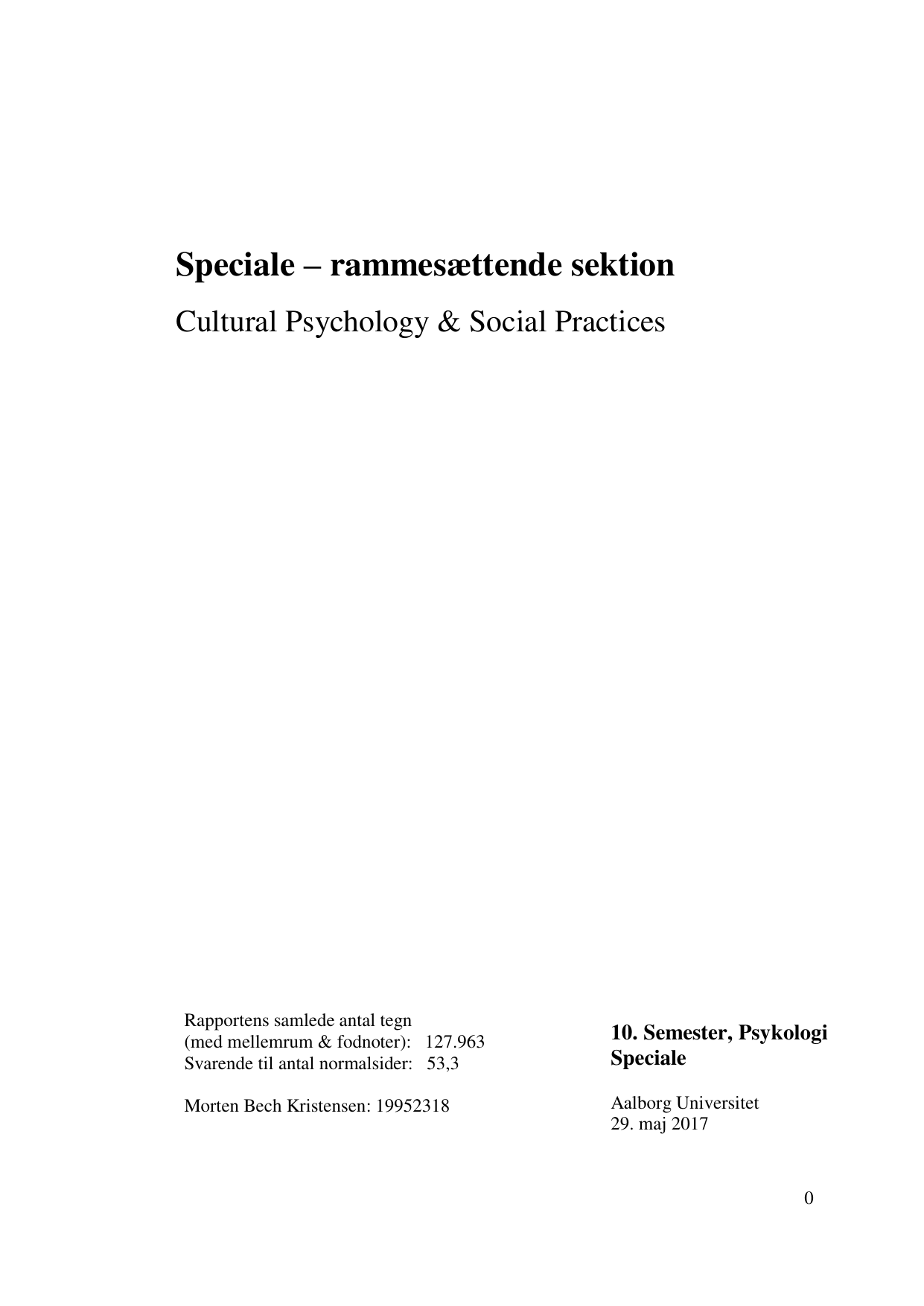
Understanding affective semiosis in pilgrimage: Affective semiosis in pilgrimage. Creating sacred.
Author
Term
4. term
Education
Publication year
2017
Submitted on
2017-05-30
Pages
72
Abstract
The creation of personal culture by performing pilgrimage is explained as the creation of mental objects of endurance in meaning-making (affective semiosis). Affective semiosis is considered as a dynamic process performed by a human being, guided by environment and semiosphere, towards creation of mental objects by using physical objects and expressing devotion to, a social framework. The aim of the article is to create a model for conceptualizing affective semiosis in pilgrimage within a cultural psychological framework informed by cultural-semiotic theory. Pilgrimage is a global, ancient and contemporary practice typically associated with organized religion. Religion is perceived in a Weberian perspective, and tied to Peirce’s semiotics and Valsiner’s cultural psychology which provides the analytical tools. The model is based on universal characteristics of pilgrimages; journey, place and body, and beliefs of the existence of forces influencing life, and of establishing relationships with forces that have residence in special places. The article ends with a summary and a graphical illustration.
The creation of personal culture by performing pilgrimage is explained as the creation of mental objects of endurance in meaning-making (affective semiosis). Affective semiosis is considered as a dynamic process performed by a human being, guided by environment and semiosphere, towards creation of mental objects by using physical objects and expressing devotion to, a social framework. The aim of the article is to create a model for conceptualizing affective semiosis in pilgrimage within a cultural psychological framework informed by cultural-semiotic theory. Pilgrimage is a global, ancient and contemporary practice typically associated with organized religion. Religion is perceived in a Weberian perspective, and tied to Peirce’s semiotics and Valsiner’s cultural psychology which provides the analytical tools. The model is based on universal characteristics of pilgrimages; journey, place and body, and beliefs of the existence of forces influencing life, and of establishing relationships with forces that have residence in special places. The article ends with a summary and a graphical illustration.
Keywords
affective ; meaning-making ; religion ; pilgrimage ; model
Documents
